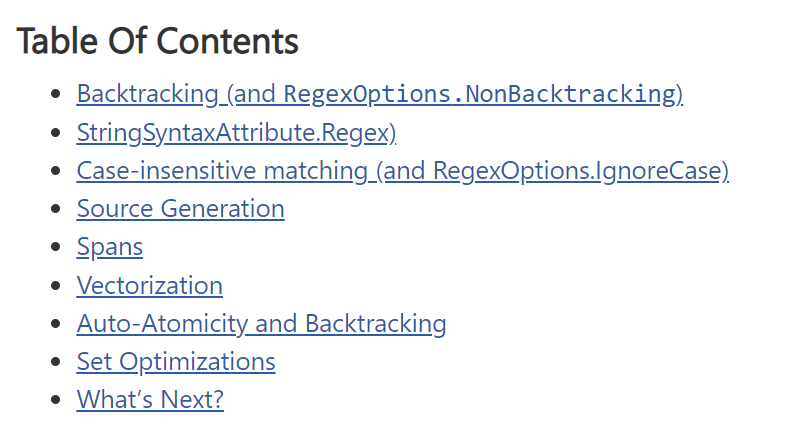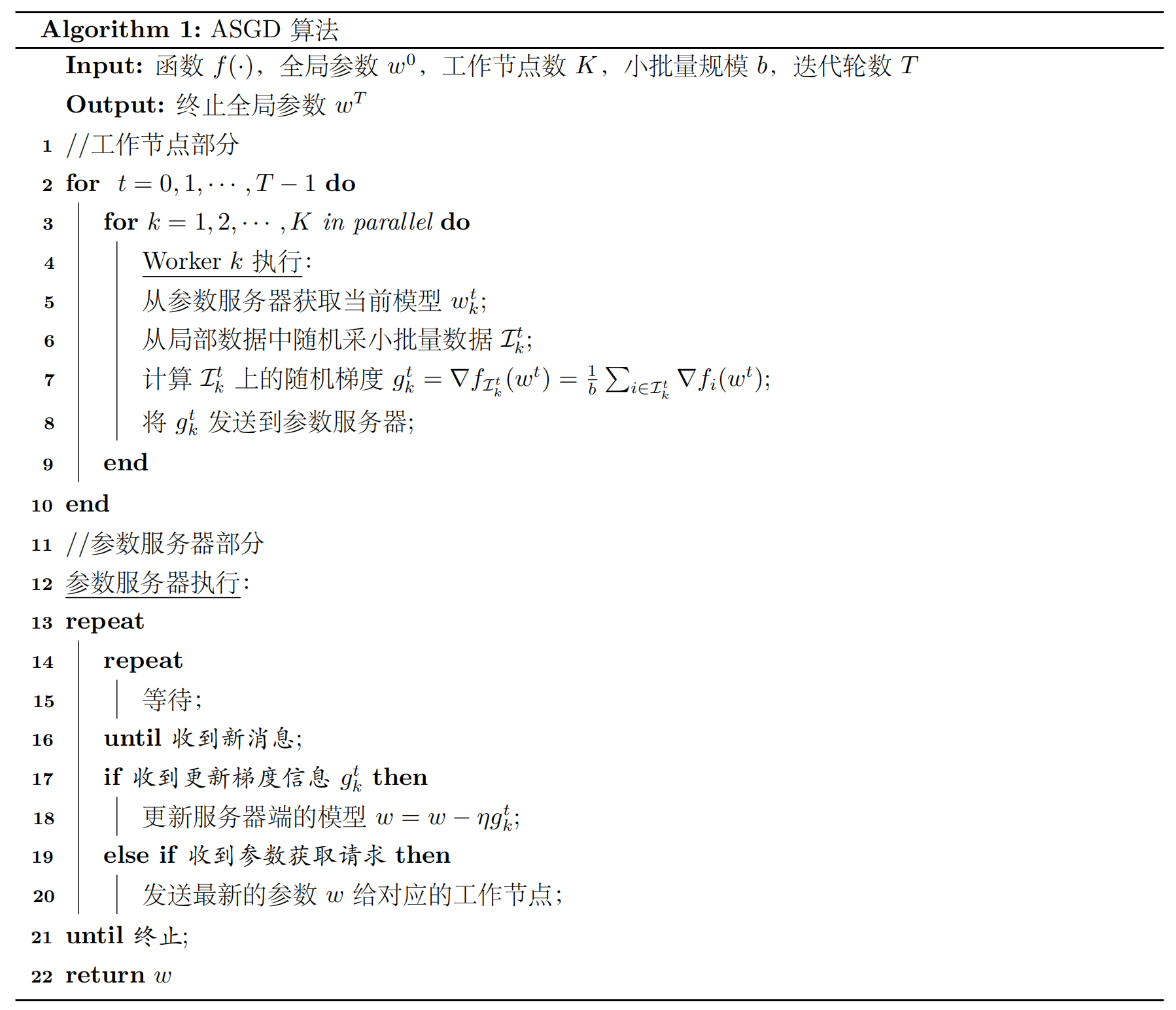目录
Luffy项目
一、 腾讯云短信开发
# 给手机发送短信---》第三方平台:腾讯云短信----》
# API和SDK,有sdk优先用sdk
# sdk:
3.0版本,云操作的sdk,不仅仅有发送短信,还有云功能的其他功能
2.0版本,简单,只有发送短信功能
# 安装sdk
-方式一:pip install tencentcloud-sdk-python
-方式二源码安装:
-下载源码
-执行 python steup.py install
# 发送短信测试
1、封装发送短信
-libs下:
send_sms_v3
__init__.py
settings.py
sms.py
# __init__.py
from .sms import get_code,send_sms
# settings.py
SECRET_ID = ''
SECRET_KEY = ''
APP_ID = ''
SIGN_NAME = ''
TEMPLATE_ID = ''
# sms.py
# 生成 n 位数字验证码的函数
import random
from tencentcloud.common import credential
from tencentcloud.common.exception.tencent_cloud_sdk_exception import TencentCloudSDKException
from tencentcloud.sms.v20210111 import sms_client, models
from tencentcloud.common.profile.client_profile import ClientProfile
from tencentcloud.common.profile.http_profile import HttpProfile
from . import settings
import json
def get_code(number=4):
code = ''
for i in range(number):
code += str(random.randint(0, 9)) # python 是强类型语言,不同类型运算不允许
return code
# 发送短信函数
def send_sms(code, mobile):
try:
cred = credential.Credential(settings.SECRET_ID, settings.SECRET_KEY)
httpProfile = HttpProfile()
httpProfile.reqMethod = "POST" # post请求(默认为post请求)
httpProfile.reqTimeout = 30 # 请求超时时间,单位为秒(默认60秒)
httpProfile.endpoint = "sms.tencentcloudapi.com" # 指定接入地域域名(默认就近接入)
clientProfile = ClientProfile()
clientProfile.signMethod = "TC3-HMAC-SHA256" # 指定签名算法
clientProfile.language = "en-US"
clientProfile.httpProfile = httpProfile
client = sms_client.SmsClient(cred, "ap-guangzhou", clientProfile)
req = models.SendSmsRequest()
req.SmsSdkAppId = settings.APP_ID
req.SignName = settings.SIGN_NAME
req.TemplateId = settings.TEMPLATE_ID
# 模板参数: 模板参数的个数需要与 TemplateId 对应模板的变量个数保持一致,,若无模板参数,则设置为空
req.TemplateParamSet = [code, '1']
# 下发手机号码,采用 E.164 标准,+[国家或地区码][手机号]
# 示例如:+8613711112222, 其中前面有一个+号 ,86为国家码,13711112222为手机号,最多不要超过200个手机号
req.PhoneNumberSet = ["+86" + mobile, ]
# 用户的 session 内容(无需要可忽略): 可以携带用户侧 ID 等上下文信息,server 会原样返回
req.SessionContext = ""
# 短信码号扩展号(无需要可忽略): 默认未开通,如需开通请联系 [腾讯云短信小助手]
req.ExtendCode = ""
# 国际/港澳台短信 senderid(无需要可忽略): 国内短信填空,默认未开通,如需开通请联系 [腾讯云短信小助手]
req.SenderId = ""
resp = client.SendSms(req)
# 输出json格式的字符串回包
res = json.loads(resp.to_json_string(indent=2))
if res.get('SendStatusSet')[0].get('Code') == 'Ok':
return True
else:
return False
except TencentCloudSDKException as err:
print(err)
return False
二、登录/注册后端逻辑API编写
1、发送短信验证码接口
class UserView(GenericViewSet):
serializer_class = UserLoginSerializer
queryset = User.objects.all().filter(is_active=True)
@action(methods=['POST'], detail=False)
def send_sms(self, request):
try:
mobile = request.data['mobile']
# 生成验证码
code = get_code()
res = send_sms_ss(code, mobile) # 同步发送,后期可以改成异步 后期学了celery可以加入异步 目前咱们可以使用 多线程
if res:
return APIResponse(msg='发送成功')
else:
return APIResponse(code=101, msg='发送失败')
except Exception as e:
raise APIException(str(e))
2、 短信登录接口
# 前端---》{mobile:122334,code:8888}---->post----》
# 视图类的方法中的逻辑
1 取出手机号和验证码
2 校验验证码是否正确(发送验证码接口,存储验证码)
-session:根本不用
-全局变量:不好,可能会取不到,集群环境中
-缓存:django 自带缓存
-from django.core.cache import cache
-cache.set()
-cache.get()
3 根据手机号查询用户,如果能查到
4 签发token
5 返回给前端
2、1.视图类
class UserView(GenericViewSet):
# class UserView(ViewSetMixin, GenericAPIView):
serializer_class = UserLoginSerializer
queryset = User.objects.all().filter(is_active=True)
# 重写
def get_serializer_class(self):
if self.action == 'login_sms':
return UserMobileLoginSerializer
else:
return super().get_serializer_class()
def _login(self,request,*args, **kwargs):
ser = self.get_serializer(data=request.data)
ser.is_valid(raise_exception=True)
token = ser.context.get('token')
username = ser.context.get('username')
return APIResponse(token=token, username=username)
@action(methods=['POST'], detail=False)
def login_sms(self, request, *args, **kwargs):
return self._login(request)
2、2.序列化类
from .models import User
from rest_framework import serializers
import re
from rest_framework.exceptions import APIException, ValidationError
from rest_framework_jwt.settings import api_settings
jwt_payload_handler = api_settings.JWT_PAYLOAD_HANDLER
jwt_encode_handler = api_settings.JWT_ENCODE_HANDLER
from django.core.cache import cache
class BaseUserSerializer:
def validate(self, attrs):
user = self._get_user(attrs)
token = self._get_token(user)
self.context['token'] = token
self.context['username'] = user.username
return attrs
def _get_user(self, attrs):
raise Exception('你必须重写它')
def _get_token(self, user):
payload = jwt_payload_handler(user)
token = jwt_encode_handler(payload)
return token
class UserMobileLoginSerializer(BaseUserSerializer, serializers.ModelSerializer):
code = serializers.CharField()
mobile = serializers.CharField()
class Meta:
model = User
fields = ['mobile', 'code'] # code 不是表的字段,要重写 ,mobile 有唯一约束,需要重写
def _get_user(self, attrs):
code = attrs.get('code')
mobile = attrs.get('mobile')
# 从缓存中取出
old_code = cache.get('sms_code_%s' % mobile)
if old_code and old_code == code:
# 根据手机号,查到用户
user = User.objects.filter(mobile=mobile).first()
if user:
return user
else:
raise APIException('用户不存在')
else:
raise APIException('验证码验证失败')
3、短信注册接口
# 前端---》{mobile:1888344,code:8888,password:123}--->post
# 后端 视图类
3、1. 路由
# http://127.0.0.1:8000/api/v1/user/register/ --->post 请求
router.register('register',views.RegisterUserView,'register')
3、2.视图类
class RegisterUserView(GenericViewSet, CreateModelMixin):
queryset = User.objects.all()
serializer_class = RegisterSerializer
def create(self, request, *args, **kwargs):
# 使用父类的,会触发序列化,一定要让code只写
super().create(request, *args, **kwargs)
# 另一种写法,不用序列化
# serializer = self.get_serializer(data=request.data)
# serializer.is_valid(raise_exception=True)
# self.perform_create(serializer)
return APIResponse(msg='注册成功')
3、3.序列化类
class RegisterSerializer(serializers.ModelSerializer):
# code 不是数据库字段,重写
code = serializers.CharField(max_length=4, write_only=True)
class Meta:
model = User
fields = ['mobile', 'code', 'password']
extra_kwargs = {
'password': {'write_only': True}
}
def validate(self, attrs): # 全局钩子
'''
1 取出前端传入的code,校验code是否正确
2 把username设置成手机号(你可以随机生成),用户名如果不传,存库进不去
3 code 不是数据库的字段,从attrs中剔除
'''
mobile = attrs.get('mobile')
code = attrs.get('code')
old_code = cache.get('sms_code_%s' % mobile)
if old_code and old_code == code:
attrs['username'] = mobile
attrs.pop('code')
else:
raise APIException('验证码验证失败')
return attrs
def create(self, validated_data): # 一定要重写create,因为密码是明文,如果不重写,存入到数据库的也是明文
# validated_data={username:18888,mobile:18888,password:123}
# 创建用户
user = User.objects.create_user(**validated_data)
# 不要忘了return,后期,ser.data 会使用当前返回的对象做序列化
return user
三、登录/注册前端页面
1、登录页面
页面分析:
- 点击首页登录按钮,弹出登录窗口的模态框
- 点击右上角clos按钮,关闭登录窗口模态框
- 登录页面包含普通登录、短信登录,点击可以切换
- 登录完成自动关闭模态框,登录注册按钮变为用户名
Logon.vue
<template>
<div class="login">
<div class="box">
<i class="el-icon-close" @click="close_login"></i>
<div class="content">
<div class="nav">
<span :class="{active: login_method === 'is_pwd'}"
@click="change_login_method('is_pwd')">密码登录</span>
<span :class="{active: login_method === 'is_sms'}"
@click="change_login_method('is_sms')">短信登录</span>
</div>
<el-form v-if="login_method === 'is_pwd'">
<el-input
placeholder="用户名/手机号/邮箱"
prefix-icon="el-icon-user"
v-model="username"
clearable>
</el-input>
<el-input
placeholder="密码"
prefix-icon="el-icon-key"
v-model="password"
clearable
show-password>
</el-input>
<el-button type="primary" @click="login">登录</el-button>
</el-form>
<el-form v-if="login_method === 'is_sms'">
<el-input
placeholder="手机号"
prefix-icon="el-icon-phone-outline"
v-model="mobile"
clearable
@blur="check_mobile">
</el-input>
<el-input
placeholder="验证码"
prefix-icon="el-icon-chat-line-round"
v-model="sms"
clearable>
<template slot="append">
<span class="sms" @click="send_sms">{{ sms_interval }}</span>
</template>
</el-input>
<el-button @click="mobile_login" type="primary">登录</el-button>
</el-form>
<div class="foot">
<span @click="go_register">立即注册</span>
</div>
</div>
</div>
</div>
</template>
<script>
export default {
name: "Login",
data() {
return {
username: '',
password: '',
mobile: '',
sms: '', // 验证码
login_method: 'is_pwd',
sms_interval: '获取验证码',
is_send: false,
}
},
methods: {
close_login() {
this.$emit('close')
},
go_register() {
this.$emit('go')
},
change_login_method(method) {
this.login_method = method;
},
check_mobile() {
if (!this.mobile) return;
// js正则:/正则语法/
// '字符串'.match(/正则语法/)
if (!this.mobile.match(/^1[3-9][0-9]{9}$/)) {
this.$message({
message: '手机号有误',
type: 'warning',
duration: 1000,
onClose: () => {
this.mobile = '';
}
});
return false;
}
// 手机号前端校验通过---》开始后端手机号是否存在的校验
// 后台校验手机号是否已存在
this.$axios({
url: this.$settings.BASE_URL + '/user/userinfo/check_mobile/?mobile=' + this.mobile,
method: 'get',
}).then(response => {
// code 如果是100,说明手机号存在,登录功能,才能发送短信
// == 只比较值是否相等
// === 即比较值,又比较类型
if (response.data.code == 100) {
this.$message({
message: '账号正常',
type: 'success',
duration: 1000,
});
// 发生验证码按钮才可以被点击
this.is_send = true;
} else {
this.$message({
message: '账号不存在',
type: 'warning',
duration: 1000,
onClose: () => {
this.mobile = '';
}
})
}
}).catch(() => {
});
},
send_sms() {
// this.is_send 如果是false,函数直接结束,就不能发送短信
if (!this.is_send) return;
// 按钮点一次立即禁用
this.is_send = false;
let sms_interval_time = 60;
this.sms_interval = "发送中...";
// 定时器: setInterval(fn, time, args)
// 往后台发送验证码
this.$axios({
url: this.$settings.BASE_URL + '/user/userinfo/send_sms/',
method: 'post',
data: {
mobile: this.mobile
}
}).then(response => {
if (response.data.code == 100) { // 发送成功
// 启动定时器
let timer = setInterval(() => {
if (sms_interval_time <= 1) {
clearInterval(timer);
this.sms_interval = "获取验证码";
this.is_send = true; // 重新回复点击发送功能的条件
} else {
sms_interval_time -= 1;
this.sms_interval = `${sms_interval_time}秒后再发`;
}
}, 1000);
} else { // 发送失败
this.sms_interval = "重新获取";
this.is_send = true;
this.$message({
message: '短信发送失败',
type: 'warning',
duration: 3000
});
}
}).catch(() => {
this.sms_interval = "频率过快";
this.is_send = true;
})
},
login() {
if (!(this.username && this.password)) {
this.$message({
message: '请填好账号密码',
type: 'warning',
duration: 1500
});
return false // 直接结束逻辑
}
this.$axios({
url: this.$settings.BASE_URL + '/user/userinfo/login_mul/',
method: 'post',
data: {
username: this.username,
password: this.password,
}
}).then(response => {
let username = response.data.username;
let token = response.data.token;
this.$cookies.set('username', username, '7d');
this.$cookies.set('token', token, '7d');
this.$emit('success', response.data.result);
}).catch(error => {
console.log(error.response.data)
})
},
mobile_login() {
if (!(this.mobile && this.sms)) {
this.$message({
message: '请填好手机与验证码',
type: 'warning',
duration: 1500
});
return false // 直接结束逻辑
}
this.$axios({
url: this.$settings.BASE_URL + '/user/userinfo/login_sms/',
method: 'post',
data: {
mobile: this.mobile,
code: this.sms,
}
}).then(response => {
let username = response.data.username
let token = response.data.token
// 放到cookie中,7天过期
this.$cookies.set('username', username, '7d')
this.$cookies.set('token', token, '7d')
// 关闭登录框
this.$emit('success')
}).catch(error => {
console.log(error.response.data)
})
}
}
}
</script>
<style scoped>
.login {
width: 100vw;
height: 100vh;
position: fixed;
top: 0;
left: 0;
z-index: 10;
background-color: rgba(0, 0, 0, 0.7);
}
.box {
width: 400px;
height: 420px;
background-color: white;
border-radius: 10px;
position: relative;
top: calc(50vh - 210px);
left: calc(50vw - 200px);
}
.el-icon-close {
position: absolute;
font-weight: bold;
font-size: 20px;
top: 10px;
right: 10px;
cursor: pointer;
}
.el-icon-close:hover {
color: darkred;
}
.content {
position: absolute;
top: 40px;
width: 280px;
left: 60px;
}
.nav {
font-size: 20px;
height: 38px;
border-bottom: 2px solid darkgrey;
}
.nav > span {
margin: 0 20px 0 35px;
color: darkgrey;
user-select: none;
cursor: pointer;
padding-bottom: 10px;
border-bottom: 2px solid darkgrey;
}
.nav > span.active {
color: black;
border-bottom: 3px solid black;
padding-bottom: 9px;
}
.el-input, .el-button {
margin-top: 40px;
}
.el-button {
width: 100%;
font-size: 18px;
}
.foot > span {
float: right;
margin-top: 20px;
color: orange;
cursor: pointer;
}
.sms {
color: orange;
cursor: pointer;
display: inline-block;
width: 70px;
text-align: center;
user-select: none;
}
</style>
2、注册页面
<template>
<div class="register">
<div class="box">
<i class="el-icon-close" @click="close_register"></i>
<div class="content">
<div class="nav">
<span class="active">新用户注册</span>
</div>
<el-form>
<el-input
placeholder="手机号"
prefix-icon="el-icon-phone-outline"
v-model="mobile"
clearable
@blur="check_mobile">
</el-input>
<el-input
placeholder="密码"
prefix-icon="el-icon-key"
v-model="password"
clearable
show-password>
</el-input>
<el-input
placeholder="验证码"
prefix-icon="el-icon-chat-line-round"
v-model="sms"
clearable>
<template slot="append">
<span class="sms" @click="send_sms">{{ sms_interval }}</span>
</template>
</el-input>
<el-button @click="register" type="primary">注册</el-button>
</el-form>
<div class="foot">
<span @click="go_login">立即登录</span>
</div>
</div>
</div>
</div>
</template>
<script>
export default {
name: "Register",
data() {
return {
mobile: '',
password: '',
sms: '',
sms_interval: '获取验证码',
is_send: false,
}
},
methods: {
close_register() {
this.$emit('close', false)
},
go_login() {
this.$emit('go')
},
check_mobile() {
if (!this.mobile) return;
// js正则:/正则语法/
// '字符串'.match(/正则语法/)
if (!this.mobile.match(/^1[3-9][0-9]{9}$/)) {
this.$message({
message: '手机号有误',
type: 'warning',
duration: 1000,
onClose: () => {
this.mobile = '';
}
});
return false;
}
// 后台校验手机号是否已存在
this.$axios({
url: this.$settings.BASE_URL + '/user/userinfo/check_mobile/',
method: 'get',
params: {
mobile: this.mobile
}
}).then(response => {
// 手机号不存在,才能发送短信,才能注册
if (response.data.code != 100) {
this.$message({
message: '欢迎注册我们的平台',
type: 'success',
duration: 1500,
});
// 发生验证码按钮才可以被点击
this.is_send = true;
} else {
this.$message({
message: '账号已存在,请直接登录',
type: 'warning',
duration: 1500,
})
}
}).catch(() => {
});
},
send_sms() {
// this.is_send必须允许发生验证码,才可以往下执行逻辑
if (!this.is_send) return;
// 按钮点一次立即禁用
this.is_send = false;
let sms_interval_time = 60;
this.sms_interval = "发送中...";
// 往后台发送验证码
this.$axios({
url: this.$settings.BASE_URL + '/user/userinfo/send_sms/',
method: 'post',
data: {
mobile: this.mobile
}
}).then(response => {
if (response.data.code==100) { // 发送成功
let timer = setInterval(() => {
if (sms_interval_time <= 1) {
clearInterval(timer);
this.sms_interval = "获取验证码";
this.is_send = true; // 重新回复点击发送功能的条件
} else {
sms_interval_time -= 1;
this.sms_interval = `${sms_interval_time}秒后再发`;
}
}, 1000);
} else { // 发送失败
this.sms_interval = "重新获取";
this.is_send = true;
this.$message({
message: '短信发送失败',
type: 'warning',
duration: 3000
});
}
}).catch(() => {
this.sms_interval = "频率过快";
this.is_send = true;
})
},
register() {
if (!(this.mobile && this.sms && this.password)) {
this.$message({
message: '请填好手机、密码与验证码',
type: 'warning',
duration: 1500
});
return false // 直接结束逻辑
}
this.$axios({
url: this.$settings.BASE_URL + '/user/register/',
method: 'post',
data: {
mobile: this.mobile,
code: this.sms,
password: this.password
}
}).then(response => {
this.$message({
message: '注册成功,3秒跳转登录页面',
type: 'success',
duration: 3000,
showClose: true,
onClose: () => {
// 去向成功页面
this.$emit('success')
}
});
}).catch(error => {
this.$message({
message: '注册失败,请重新注册',
type: 'warning',
duration: 1500,
showClose: true,
onClose: () => {
// 清空所有输入框
this.mobile = '';
this.password = '';
this.sms = '';
}
});
})
}
}
}
</script>
<style scoped>
.register {
width: 100vw;
height: 100vh;
position: fixed;
top: 0;
left: 0;
z-index: 10;
background-color: rgba(0, 0, 0, 0.3);
}
.box {
width: 400px;
height: 480px;
background-color: white;
border-radius: 10px;
position: relative;
top: calc(50vh - 240px);
left: calc(50vw - 200px);
}
.el-icon-close {
position: absolute;
font-weight: bold;
font-size: 20px;
top: 10px;
right: 10px;
cursor: pointer;
}
.el-icon-close:hover {
color: darkred;
}
.content {
position: absolute;
top: 40px;
width: 280px;
left: 60px;
}
.nav {
font-size: 20px;
height: 38px;
border-bottom: 2px solid darkgrey;
}
.nav > span {
margin-left: 90px;
color: darkgrey;
user-select: none;
cursor: pointer;
padding-bottom: 10px;
border-bottom: 2px solid darkgrey;
}
.nav > span.active {
color: black;
border-bottom: 3px solid black;
padding-bottom: 9px;
}
.el-input, .el-button {
margin-top: 40px;
}
.el-button {
width: 100%;
font-size: 18px;
}
.foot > span {
float: right;
margin-top: 20px;
color: orange;
cursor: pointer;
}
.sms {
color: orange;
cursor: pointer;
display: inline-block;
width: 70px;
text-align: center;
user-select: none;
}
</style>

























